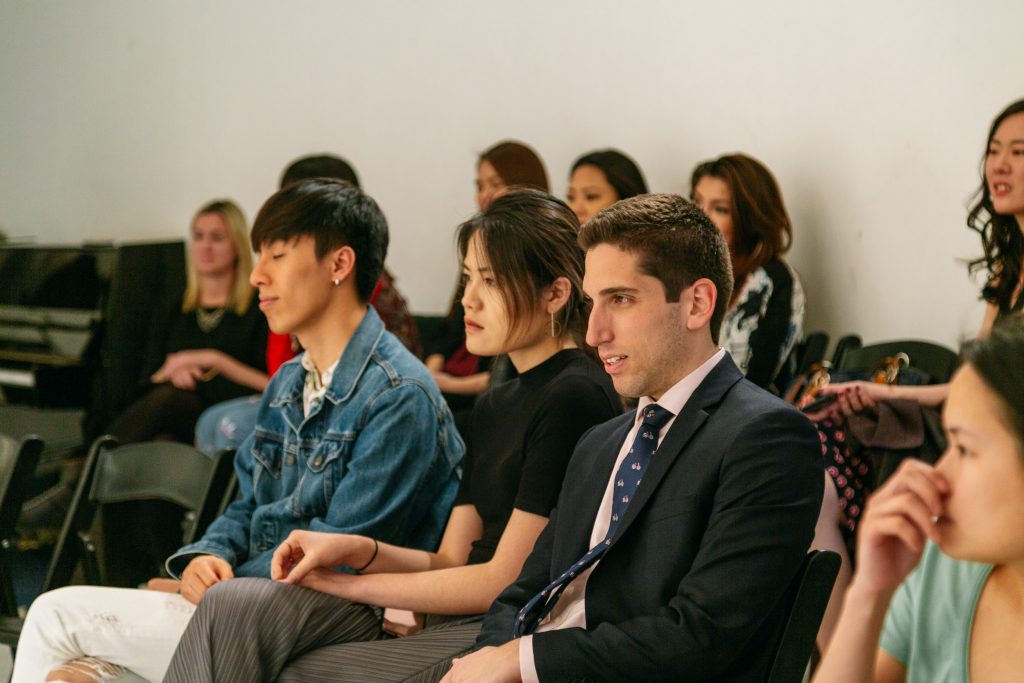Diverse Voices, Authentic Stories: Improving Asian And Asian American Representation In Media

Table of Contents
The Current State of Asian and Asian American Representation
The portrayal of Asians and Asian Americans in media is far from accurate or representative. Harmful stereotypes and a lack of diversity continue to dominate the narrative.
Stereotypes and Tropes
Common stereotypes, often rooted in xenophobia and orientalism, drastically limit the complexity of Asian and Asian American characters. These include:
- The Model Minority: This stereotype portrays Asians as inherently intelligent, hardworking, and successful, often at the expense of acknowledging struggles and complexities. Examples include the overachieving, emotionless student or the tech genius with limited personality.
- The Dragon Lady: This trope depicts Asian women as hypersexualized, manipulative, and villainous figures. This harmful stereotype reduces complex women to one-dimensional tropes.
- The Emasculated Asian Man: This stereotype portrays Asian men as submissive, effeminate, or sexually inept, perpetuating damaging gender roles. Examples include the nerdy sidekick or the perpetually awkward romantic interest.
The consequences of these portrayals are severe:
- Perpetuation of harmful misconceptions and prejudice against Asian communities.
- Limiting opportunities for Asian and Asian American actors, writers, and directors.
- Reinforcing negative stereotypes in society and impacting self-perception within the Asian community.
Lack of Diversity
Beyond harmful stereotypes, the lack of diversity in representation is equally problematic. The portrayal of Asian and Asian American characters is extremely limited:
- Statistics: Studies consistently show a disproportionately low percentage of Asian and Asian American actors, writers, and directors in major film and television productions. This underrepresentation extends to leadership positions.
- Underrepresentation of Specific Groups: The vast diversity within the Asian community – encompassing numerous ethnicities, nationalities, socio-economic backgrounds, sexual orientations, and religions – is rarely reflected in media portrayals. South Asian, Southeast Asian, and Pacific Islander communities are particularly underrepresented. The experiences of LGBTQ+ Asians are often ignored.
Strategies for Improving Representation
Moving beyond the current state requires a multifaceted approach that addresses both on-screen and behind-the-scenes representation.
Amplifying Authentic Voices
The most crucial step is empowering Asian and Asian American creatives to shape the narratives:
- Importance of Representation Behind the Camera: Writers, directors, and producers who understand the nuances of Asian cultures and experiences are essential for creating authentic and nuanced characters and stories.
- Support for Asian and Asian American-Led Productions: Funding and promoting independent films and production companies led by Asian and Asian American creatives is vital for fostering diverse voices. This includes mentorship programs and access to funding opportunities.
Developing Complex and Multi-Dimensional Characters
Moving away from stereotypical portrayals requires the creation of realistic, three-dimensional characters:
- Positive Examples: While rare, there are examples of positive representation. Highlighting and analyzing these examples can showcase what's possible.
- Techniques for Authentic Character Development: Thorough research, collaboration with community members from diverse backgrounds, and working with sensitivity readers are crucial to ensuring accurate and respectful portrayals.
Promoting Diverse Storytelling
The stories told must reflect the breadth of the Asian and Asian American experience:
- Examples of Successful Diverse Storytelling: Celebrating successful examples of diverse storytelling encourages further innovation.
- Showcasing Different Cultures, Perspectives, and Languages: Media should reflect the linguistic and cultural diversity within the Asian community, showcasing different dialects, traditions, and perspectives.
The Role of Consumers and Audiences
Consumers play a powerful role in driving positive change.
Supporting Inclusive Media
Consumer choices directly impact the type of media produced:
- Support Inclusive Media: Actively choosing to stream or purchase media that accurately represents Asians and Asian Americans sends a clear message to studios and networks.
- Boycotting Harmful Representations: Boycotting media that perpetuates harmful stereotypes is a powerful way to express dissatisfaction and demand better representation.
Demanding Better Representation
Active engagement and advocacy are crucial for fostering change:
- Contacting Networks and Studios: Writing to networks and studios to express concerns and support for inclusive programming is effective.
- Participating in Online Discussions: Participating in online discussions and raising awareness about these issues helps create a wider conversation.
Diverse Voices, Authentic Stories: A Call to Action
Accurate and diverse representation of Asian and Asian Americans in media is not just a matter of fairness; it's essential for creating a more equitable and just society. By amplifying authentic voices, developing complex characters, promoting diverse storytelling, and supporting inclusive media, we can move towards a more representative media landscape. Let's work together to ensure authentic Asian and Asian American voices are heard and celebrated, leading to a future where diverse voices and authentic stories are the norm, not the exception.

Featured Posts
-
 Is Henry Cavill The Next Nova A Look At The Casting Speculation
May 12, 2025
Is Henry Cavill The Next Nova A Look At The Casting Speculation
May 12, 2025 -
 Find The Ny Knicks Vs Cleveland Cavaliers Game Time Tv Channel And Streaming Information
May 12, 2025
Find The Ny Knicks Vs Cleveland Cavaliers Game Time Tv Channel And Streaming Information
May 12, 2025 -
 A Peek Inside Rich Kids Cribs And Their Lavish Lifestyle
May 12, 2025
A Peek Inside Rich Kids Cribs And Their Lavish Lifestyle
May 12, 2025 -
 Keanu Reeves Confirms Will There Be A John Wick 5
May 12, 2025
Keanu Reeves Confirms Will There Be A John Wick 5
May 12, 2025 -
 Extended Border Checks In The Netherlands A Response To Shifting Migration Trends
May 12, 2025
Extended Border Checks In The Netherlands A Response To Shifting Migration Trends
May 12, 2025
Latest Posts
-
 Faber Faces Backlash Over Rejected Coa Volunteer Honours
May 12, 2025
Faber Faces Backlash Over Rejected Coa Volunteer Honours
May 12, 2025 -
 New Approach Netherlands To Utilize Low Security Detention And Area Restrictions For Managing Asylum Seekers
May 12, 2025
New Approach Netherlands To Utilize Low Security Detention And Area Restrictions For Managing Asylum Seekers
May 12, 2025 -
 Shifting Border Enforcement Fewer Arrests More Rejected Entries
May 12, 2025
Shifting Border Enforcement Fewer Arrests More Rejected Entries
May 12, 2025 -
 Stricter Measures Netherlands To Build Low Security Detention Facilities And Enforce Area Bans On Asylum Seekers
May 12, 2025
Stricter Measures Netherlands To Build Low Security Detention Facilities And Enforce Area Bans On Asylum Seekers
May 12, 2025 -
 Amsterdam Cafe To Debut Kings Day Mural Featuring Marjolein Fabers Iconic Ribbon Gate
May 12, 2025
Amsterdam Cafe To Debut Kings Day Mural Featuring Marjolein Fabers Iconic Ribbon Gate
May 12, 2025
